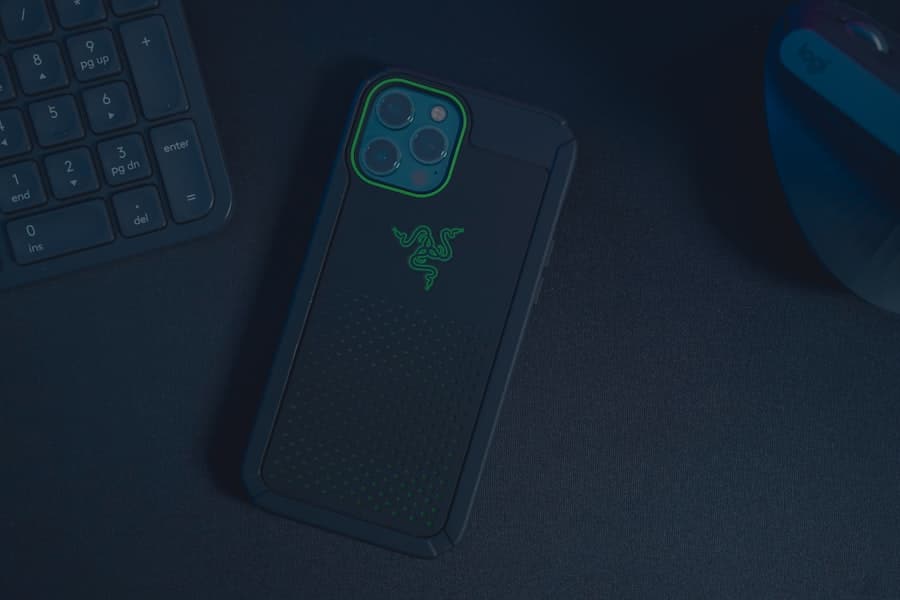The advent of 5G technology has ushered in a new era of connectivity, characterized by unprecedented speed, low latency, and the ability to connect a vast number of devices simultaneously. This technological leap is particularly significant in the realm of border security, where the need for efficient surveillance systems is paramount. 5G-based smart border surveillance systems leverage these advancements to enhance the monitoring and management of national borders, providing authorities with real-time data and insights that were previously unattainable.
These systems integrate various technologies, including high-definition cameras, drones, and sensors, all interconnected through a robust 5G network, enabling a comprehensive approach to border security. The implementation of 5G in border surveillance is not merely an upgrade; it represents a fundamental shift in how nations can protect their borders. Traditional surveillance methods often suffer from limitations such as delayed data transmission and inadequate coverage, which can hinder timely responses to security threats.
In contrast, 5G technology facilitates instantaneous communication between devices and command centers, allowing for rapid decision-making and action. As countries grapple with increasing challenges related to illegal immigration, smuggling, and terrorism, the deployment of smart border surveillance systems powered by 5G is becoming an essential strategy for enhancing national security.
Key Takeaways
- 5G technology enables faster data transmission and lower latency, making it ideal for smart border surveillance systems.
- AI and machine learning integration in 5G-based surveillance systems allows for real-time analysis and decision-making, enhancing border security.
- Challenges with 5G-based surveillance systems include cybersecurity threats and potential misuse of collected data.
- 5G-based smart border surveillance systems have the potential to significantly improve border security by providing real-time monitoring and response capabilities.
- Privacy and ethical considerations must be carefully addressed in the development and implementation of 5G-based smart border surveillance systems.
Advantages of 5G Technology for Border Surveillance
Enhanced Real-Time Monitoring
One of the most significant advantages of 5G technology in border surveillance is its high-speed data transmission capabilities. With speeds reaching up to 10 Gbps, 5G allows for the seamless streaming of high-definition video feeds from surveillance cameras and drones. This capability enables border security personnel to monitor vast areas in real-time, providing them with a clearer picture of activities occurring along the border.
Swift Response and Deployment
For instance, a border patrol unit can receive live footage from multiple drones simultaneously, allowing them to assess situations quickly and deploy resources where they are most needed. Moreover, the low latency characteristic of 5G technology—often as low as one millisecond—ensures that data is transmitted almost instantaneously. This rapid communication is crucial in scenarios where every second counts, such as intercepting unauthorized crossings or responding to potential threats.
Scalability and Comprehensive Coverage
The ability to react swiftly can mean the difference between preventing an incident and allowing it to escalate. Additionally, the capacity of 5G networks to support a massive number of connected devices simultaneously means that various sensors and cameras can be deployed without overwhelming the network infrastructure.
Integration of AI and Machine Learning in 5G-Based Smart Border Surveillance

The integration of artificial intelligence (AI) and machine learning into 5G-based smart border surveillance systems enhances their effectiveness significantly. AI algorithms can analyze vast amounts of data collected from various sources—such as video feeds, sensor inputs, and historical data—enabling predictive analytics that can identify potential threats before they materialize. For example, machine learning models can be trained to recognize patterns associated with illegal crossings or smuggling activities, allowing authorities to focus their resources on high-risk areas.
Furthermore, AI-powered systems can automate routine monitoring tasks, freeing up human operators to concentrate on more complex decision-making processes. For instance, an AI system could automatically flag unusual movements detected by surveillance cameras or drones, alerting border security personnel to investigate further. This not only increases efficiency but also reduces the likelihood of human error in monitoring activities.
The combination of 5G’s real-time data transmission capabilities with AI’s analytical power creates a dynamic surveillance environment where threats can be identified and addressed proactively.
Challenges and Concerns with 5G-Based Smart Border Surveillance Systems
Despite the numerous advantages offered by 5G-based smart border surveillance systems, several challenges and concerns must be addressed. One significant issue is the vulnerability of these systems to cyberattacks. As surveillance technologies become increasingly interconnected through 5G networks, they also become more susceptible to hacking and other malicious activities.
A successful cyber intrusion could compromise sensitive data or disrupt surveillance operations entirely, potentially leading to severe security breaches at national borders. Additionally, the deployment of advanced surveillance technologies raises concerns about the cost and complexity of implementation. Establishing a comprehensive 5G infrastructure requires substantial investment in both hardware and software components.
Furthermore, integrating new technologies into legacy systems can pose significant technical hurdles that require specialized expertise and training for personnel.
Impact of 5G-Based Smart Border Surveillance on Border Security
The impact of 5G-based smart border surveillance on border security is profound and multifaceted. By providing real-time situational awareness, these systems enable border security agencies to respond more effectively to threats and incidents. For example, during a recent surge in illegal crossings at a specific border region, authorities equipped with 5G-enabled drones were able to monitor the situation closely and deploy personnel to intercept unauthorized individuals before they could breach the border.
This proactive approach not only enhances immediate security but also serves as a deterrent against future attempts. Moreover, the data collected through these advanced surveillance systems can inform long-term strategic planning for border security. By analyzing trends and patterns over time, agencies can identify vulnerabilities in their current operations and develop targeted strategies to address them.
For instance, if data reveals that certain areas are consistently prone to illegal activity during specific times of the year, agencies can allocate additional resources or implement preventive measures during those periods. This data-driven approach fosters a more efficient allocation of resources and enhances overall border security effectiveness.
Privacy and Ethical Considerations in 5G-Based Smart Border Surveillance

As with any advanced surveillance technology, privacy and ethical considerations are paramount in the deployment of 5G-based smart border surveillance systems. The ability to monitor individuals in real-time raises significant concerns about civil liberties and the potential for abuse of power by authorities. Critics argue that such systems could lead to unwarranted surveillance of innocent individuals or communities, particularly marginalized groups who may be disproportionately affected by increased monitoring.
To address these concerns, it is essential for governments and agencies implementing these technologies to establish clear guidelines and regulations governing their use. Transparency in how data is collected, stored, and utilized is crucial in building public trust. Additionally, mechanisms should be put in place to ensure accountability for any misuse of surveillance data.
Engaging with civil society organizations and stakeholders during the development and implementation phases can help create a balanced approach that respects individual rights while enhancing national security.
Future Developments and Innovations in 5G-Based Smart Border Surveillance Systems
Looking ahead, the future of 5G-based smart border surveillance systems is likely to be characterized by continuous innovation and development. As technology evolves, we can expect advancements in sensor capabilities, data analytics, and integration with other emerging technologies such as blockchain for secure data sharing. For instance, the use of advanced biometric sensors could enhance identity verification processes at borders, allowing for more efficient processing of individuals while maintaining high-security standards.
Moreover, the potential for collaboration between nations in developing shared surveillance frameworks could lead to more effective cross-border security measures. By pooling resources and data-sharing agreements facilitated by secure 5G networks, countries can work together to combat transnational threats such as human trafficking and drug smuggling more effectively. This collaborative approach not only enhances individual nations’ security but also contributes to global stability.
The Role of 5G-Based Smart Border Surveillance in Shaping the Future of Border Security
In summary, 5G-based smart border surveillance systems represent a transformative advancement in how nations approach border security challenges. By harnessing the power of high-speed connectivity, AI integration, and real-time data analytics, these systems offer unprecedented capabilities for monitoring and managing borders effectively. While there are challenges related to cybersecurity risks and ethical considerations that must be navigated carefully, the potential benefits for national security are substantial.
As countries continue to explore innovative solutions for enhancing border security in an increasingly complex global landscape, 5G technology will undoubtedly play a pivotal role in shaping future strategies. The ongoing development of these systems will require collaboration among governments, technology providers, and civil society to ensure that they are implemented responsibly and effectively. Ultimately, the successful integration of 5G-based smart border surveillance will not only bolster national security but also contribute to a safer world for all.
In a related article discussing the best software to create training videos, content creators can find valuable information on how to effectively utilize technology for educational purposes. This article provides insights into the various tools and platforms available for creating engaging and informative training videos. For those interested in enhancing their video editing skills, they can also check out the article on how to choose the best laptop for video editing here.
FAQs
What is 5G-based smart border surveillance system?
5G-based smart border surveillance system is a technology that uses 5G network connectivity to enhance border security through advanced surveillance and monitoring capabilities. It involves the use of high-speed data transmission, real-time video analytics, and IoT devices to detect and respond to potential security threats at border areas.
How does 5G technology improve border surveillance?
5G technology improves border surveillance by enabling faster and more reliable data transmission, supporting high-definition video streaming for real-time monitoring, and facilitating the integration of advanced technologies such as AI-powered analytics, drones, and sensors for enhanced situational awareness and threat detection.
What are the potential benefits of 5G-based smart border surveillance systems?
The potential benefits of 5G-based smart border surveillance systems include improved border security, faster response to security threats, enhanced situational awareness, reduced operational costs, and the ability to deploy advanced technologies for more effective border monitoring and control.
What are the concerns surrounding 5G-based smart border surveillance systems?
Some concerns surrounding 5G-based smart border surveillance systems include privacy issues related to the collection and use of personal data, potential misuse of surveillance technologies, and the need to ensure compliance with legal and ethical standards in the deployment and operation of border surveillance systems.
How is 5G technology expected to shape the future of border security?
5G technology is expected to shape the future of border security by enabling the development and deployment of more advanced and interconnected surveillance systems that can provide real-time intelligence, support autonomous security operations, and enhance the overall effectiveness of border control measures.

